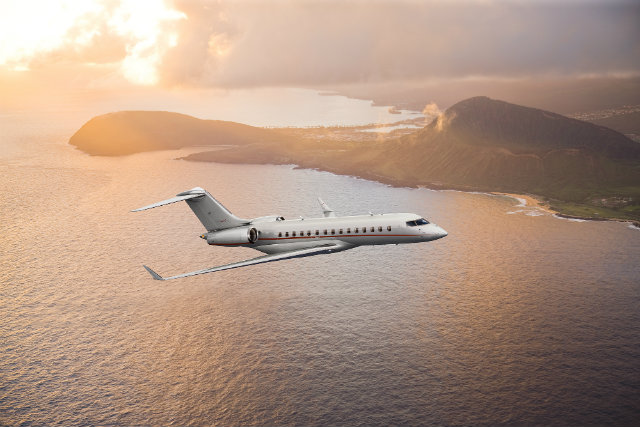Business aircraft ownership is losing ground to more flexible, capital-efficient, rent-based private flying models, while the population of very wealthy individuals using high-end travel options is growing larger and younger, a new report suggests.
The Jet Traveller Report, published by subscription-based business jet operator VistaJet, and wealth information services company Wealth-X, is described "as the first customer-centric analysis of the private aviation industry".
Using information gathered from "in-depth interviews" and an international "database of dossiers" on ultra-high-net-worth individuals (UHNWIs) – defined as those with liquid assets of more than $30 million – the study provides what it calls a "unique insight into the profiles of private flyers around the globe; how they fly, and what is most important to them".

VistaJet
It reveals that the traditional link between the population of UHNWIs and the fleet of wholly owned business aircraft is becoming increasingly tenuous. In the USA, for example, the inventory of privately owned jets grew by 34% between 2006 and 2016, to reach 12,700. However, the population of UHNWIs in the country grew by 46% over the same period, reaching 73,000 in 2016.
The picture in China is similar. Despite recording a 347% hike in private aircraft ownership between 2006 and 2016, the population of UHNWIs in the country grew by 840% over the same period, the study shows.
"Increasingly, people are opting not to own a high-cost, high-depreciation asset, but to use flexible, hassle-free capital-efficient, rent-based models, such as a charter and membership programmes," says says VistaJet's chief operating officer, Ian Moore. "The emergence of companies like Uber and Airbnb is reflective of this trend," he adds.
These options are also attracting a new wave of youthful, wealthy, tech-savvy entrepreneurs who are flocking to private aviation in increasing numbers. "While the average age of a private jet user is 61, one emerging trend is a younger clientele," says the study.
This finding is supported by VistaJet. In 2017, the company saw the average age of its private jet passenger drop from 40 to 38, and expects this downward trend to continue in 2018. "These users, driven by their lifestyles, have come to expect choice, personalisation, price transparency and ease of access through bespoke technology," says Moore.

VistaJet
The Jet Traveller Report identifies a global fleet 21,000 registered private jets and a population of 226,450 UHNWIs – of whom 90% are located in Asia, Europe and North America.
Travellers are broken into three groups: those owning a whole aircraft, or a share of an aircraft; members of private flying programmes, such as VistaJet, and those who use a variety of methods to fly, including ad hoc charter and first-class airline travel.
"By identifying who these individuals are, and understanding how and why they fly, we gain a clear understanding of the choices facing them, and the typologies that exist in the market," says Wealth-X custom research director Winston Chesterfield.
"It doesn’t come down to a simple matter of personal wealth – in fact many owners are also members of private flying programmes. It is common for the ultra-wealthy to use more than one way of flying, depending on their needs."
The study identifies five key factors that influence which flying option individuals choose: maximising time and efficiency; maintaining control of their schedule; perception of safety – particularly when travelling with family members; mitigating risks to personal safety, reputation and wealth – "Some people won’t use their own aircraft when they don't want to reveal their whereabouts," says Chesterfield; and cost and perceived value.
"An expensive asset like a business jet is not always regarded as good value by shareholders. But if that aircraft is flown over 800h a year, it makes economic sense to keep it, rather than use the other travel options," notes Moore.
He calls the report "an invaluable tool" in helping Malta-headquartered VistaJet to identify the growth markets and the travel needs of private aircraft customers.
"It might sound obvious, but the infrastructure required to deliver the level of service that our clients expect of every flight across 187 countries, 1,600 airports on 24h notice is incredibly sophisticated, and we are constantly looking at ways to keep delivering a top-quality, bespoke service," he adds.
VistaJet operates a fleet of 72 long-range Bombardier Global 6000/5000s, large-cabin Challenger 605/850s, and super-midsize Challenger 350s.
Source: Flight International



















